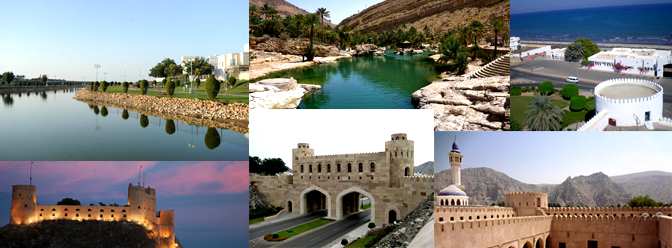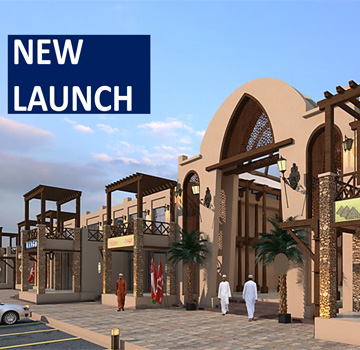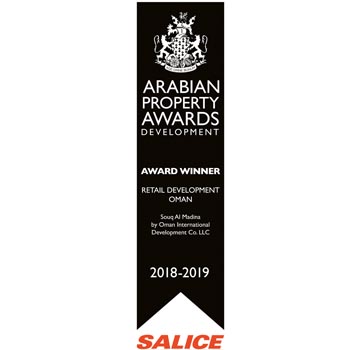The Sultanate of Oman, an Arab country in the southeastern coast of the Arabian Peninsula, holds a strategically important position at the mouth of the Persian Gulf.
Emirates to the northwest, Saudi Arabia to the west, and Yemen to the southwest, and shares marine borders with Iran and Pakistan.
The 3,165km coast is formed by the Arabian Sea on the southeast and the Gulf of Oman on the northeast. The Madha and Musandam exclaves are surrounded by the UAE on their land borders, with the Strait of Hormuz (which it shares with Iran) and Gulf of Oman forming Musandam's coastal boundaries. Oman is the second largest country by land area in the GCC covering an area of 309,500 km²
Oman is an absolute monarchy. The Sultan Qaboos bin Said al Said has been the hereditary leader of the country since 1970. Sultan Qaboos is the longest-serving ruler in the Middle East.
Capital: Muscat
Religion: Islam.
Currency: Omani Rial (equivalent to 2.58 USD)
Languages: Official language is Arabic, though English and Urdu are commonly used.
Oman has a vast wealth of industrial rocks, minerals and metals. Some of the natural resources of Oman are petroleum, natural gas, copper, chromite, laterite and manganese. Besides Oman has deposits of Limestone & Marble, Dolomite, Gypsum, Silica sands and Quartzite, Clays and Shale, Coal, and Olivine.
Oman has more than 500 forts, towers and castles. Most of them restored, some of them converted to museums. Besides, Oman has archeological and world heritage sites dating back to third millennium BC. It has the oldest irrigation structure in the region dating back to over 2000 years ago.
Omani frankincense is one of the finest and most expensive in the world. The frankincense trees date back to 2000 BC and are found primarily in the Dhofar governorate in the southern part of Oman. Dhofar traded frankincense with ancient civilisations such as the Babylonians, Romans, and Egyptians.
From intimidating deserts to rugged mountains, serene beaches and tranquil wadis; Oman's landscape offers some exciting opportunities for adventure. Avid trekkers will enjoy the walks through trails over mountains and into canyons, some which have running water all the year round. At the village of Mazara you will find rocky tracks fording the wadi, crystal clear pools of water ideal for a swim.
From intimidating deserts to rugged mountains, serene beaches and tranquil wadis; Oman's landscape offers some exciting opportunities for adventure. Avid trekkers will enjoy the walks through trails over mountains and into canyons, some which have running water all the year round. At the village of Mazara you will find rocky tracks fording the wadi, crystal clear pools of water ideal for a swim.
Rock climbing enthusiasts of all levels will find plenty to keep them busy as routes of all grades are available. Rugged mountains, steep cliffs overlooking breathtaking sceneries, rouged paths, deep canyons and towering cliffs present an enigmatic challenge. The rocky towers of Wadi Ghool, scales to a height of 300 meters and the gorgeous façade of Jabal Mishfat has climbs from 120 to 500 meters. Jabal Misht remains the model location due to its rocky façade that extends roughly for 6 km and rises to 850 m.
Oman's coast is lined with many soft sand beaches. Activity for beach visitors include sunning, swimming, kitesurfing, diving, snorkeling, boating, surfing, beach combing and shell collecting. Several species of turtles living for over 100 years swim the length and breadth of the Indian Ocean and return every year to lay their eggs on the beaches of Ras al Hadd, Ras Al Junayz and Masirah island. Dolphins frequent the seas of Oman on a regular basis and can be seen in close proximity to the coast. Fahal Island is a popular dolphin watching site. Whales visit the shores beaches of the Sultanate at irregular intervals, especially in Ash Sharqiyah and Al Wusta regions, in addition to Dhofar Governorate.
There is an array of bird watching sites in other parts of the country. Eagles are popular in Musandam. An Arabian oryx sanctuary in Al-Wusta Region provides an opportunity to watch desert species, notably spotted sand grouse, golden eagle and houbara bustard. Masirah Island is the home of thousands of birds especially in the winter such as greater flamingo, seagulls, terns and herons. Dhofar with its diverse terrain and monsoon rains has many birds, particularly African species.
World Heritage Sites:
Bahla Fort
Bahla Fort lies in Bahla State in Dakiliya region. Since 1987, its name has been included in the World Heritage Sites List. Bahla Fort includes: Bahla Oasis with its traditional souks, old alleys, ancient mosques and its wall that extends over a distance of approximately 13 kilometres and whose construction dates back to the pre- Islamic era. Originally, Bahla Fort was built in the third millennium BC.
Ancient settlements and tombs
The third-millennium BC settlement and Bat tombs historical sites are located in Bat, Al Khutum and Al Ayn in Ad Dhahirah region in Ibri Governorate. They are considered as one of the archaeological and historical sites that date back to the third century BC and are located to the east of Ibri. In 1988, Bat Tombs was the second site to be included in the World Heritage list in Oman. The historic significance of the Bat site is that it is located at the crossroads of an ancient trade route. Caravans loaded with goods heading to other nearby destinations passed through Bat. Included with the Bat settlement in the World Heritage List are two other sites: Al Khutum "Al Wahrah" and Wadi Al Ayn Tombs.
Frankincense Route
The luban (frankincense) route in Dhofar. The route comprises the ancient cities of Al-Blaid and Shasr, Khuwr Rori, and Wadi Dooka. These locations collectively contributed to the flourishing of frankincense trade for many centuries. The frankincense trees in Wadi Dukah, the Al Shisur Oases and the ports of Khawr Ruri and Khawr Al Baleed have contributed to the prosperity of the frankincense trade in the region for several centuries. It was one of the most active trades in the Middle Ages and earlier.
Falajs
In July 2006, the World Heritage Committee endorsed the inclusion of the five Omani falajs in the World Heritage List to express the international standing of this unique water system that represents a cultural legacy created by the Omanis over 2,000 years ago, being the oldest irrigation structure in the region. It is still the major source of irrigation in the Sultanate and a water source that can be relied on in most Omani cities and villages. It is rare to find anything like these falajs elsewhere in the world.
Contact
Details
PO Box 1040, Ruwi, Postal Code 112, Muscat, Sultanate of Oman
HEAD OFFICE
Towell Group, Ground Floor, Lobby 2,
Exhibition Road, Azaiba,
Muscat,Sultanate of Oman
LEASING OFFICE
Al Noor Plaza, Ground Floor,
Madinat Sultan Qaboos, Oman.
















